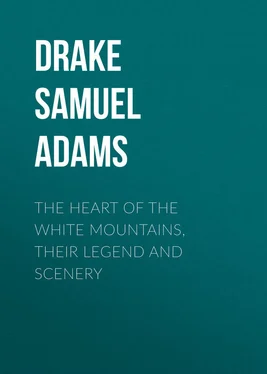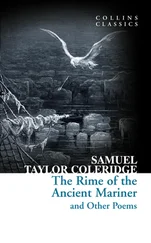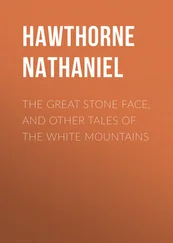Samuel Drake - The Heart of the White Mountains, Their Legend and Scenery
Здесь есть возможность читать онлайн «Samuel Drake - The Heart of the White Mountains, Their Legend and Scenery» — ознакомительный отрывок электронной книги совершенно бесплатно, а после прочтения отрывка купить полную версию. В некоторых случаях можно слушать аудио, скачать через торрент в формате fb2 и присутствует краткое содержание. Жанр: foreign_antique, foreign_prose, на английском языке. Описание произведения, (предисловие) а так же отзывы посетителей доступны на портале библиотеки ЛибКат.
- Название:The Heart of the White Mountains, Their Legend and Scenery
- Автор:
- Жанр:
- Год:неизвестен
- ISBN:нет данных
- Рейтинг книги:4 / 5. Голосов: 1
-
Избранное:Добавить в избранное
- Отзывы:
-
Ваша оценка:
- 80
- 1
- 2
- 3
- 4
- 5
The Heart of the White Mountains, Their Legend and Scenery: краткое содержание, описание и аннотация
Предлагаем к чтению аннотацию, описание, краткое содержание или предисловие (зависит от того, что написал сам автор книги «The Heart of the White Mountains, Their Legend and Scenery»). Если вы не нашли необходимую информацию о книге — напишите в комментариях, мы постараемся отыскать её.
The Heart of the White Mountains, Their Legend and Scenery — читать онлайн ознакомительный отрывок
Ниже представлен текст книги, разбитый по страницам. Система сохранения места последней прочитанной страницы, позволяет с удобством читать онлайн бесплатно книгу «The Heart of the White Mountains, Their Legend and Scenery», без необходимости каждый раз заново искать на чём Вы остановились. Поставьте закладку, и сможете в любой момент перейти на страницу, на которой закончили чтение.
Интервал:
Закладка:
In some places the rock is sheer and smooth, in others it is broken regularly down, for half its whole height, to where it is joined by rude buttresses of massive granite. The lithe maples climb up the steepest ravines, but cannot pass the waste of sheer rock stretching between them and the firs, which look down over the brink of the precipice. Rusted purple is the prevailing color, blotched here and there with white, like the drip oozing from limestone. We soon emerged on the shore of Echo Lake.
Hovering under the great precipices, which lie heavily shadowed on its glossy surface, are gathered the waters flowing from the airy heights above – the little rills, the rivulets, the cascades. The tremendous shadow the cliff flings down seems lying deep in the bosom of the lake, as if perpetually imprinted there. Slender birches, brilliant foliage, were daintily etched upon the surface, like arabesques on polished steel. The water is perfectly transparent, and without a ripple. Indeed, the breezes playing around the summit, or humming in the tree-tops, seem forbidden to enter this haunt of Dryads. The lake laps the yellow strand with a light, fluttering movement. The place seems dedicated to silence itself.
To destroy this illusion, a man came out of a booth and touched off a small cannon. The effect was like knocking at half a dozen doors at once. And the silence which followed seemed all the deeper. Then the aged rock was pelted with questions, and made to jeer, laugh, menace, or curse by turns, or all at once. How grandly it bore all these petty insolences! How presumptuous in us thus to cover its hoary front with obloquy! We could never get the last word. We did not even come off in triumph. How ironically the mountain repeated, “Who are you?” and “What am I!” With what energy it at last vociferated, “Go to the devil!” To the Devil’s Den we accordingly go.
Following a woodland path skirting the base of the cliffs, we were very soon before the entrance of the Devil’s Den, formed by a huge piece of the cliff falling upon other detached fragments in such a way as to leave an aperture large enough to admit fifty persons at once. A ponderous mass divides the cavern into two chambers, one of which is light, airy, and spacious, the other dark, gloomy, and contracted – a mere hole. This might well have been the lair of the bears and panthers formerly roaming, unmolested, these woods.
The Cathedral is a recess higher up in the same cliff, hollowed out by the cleaving off of the lower rock, leaving the upper portion of the precipice overhanging. The top of the roof is as high as a tall tree. Some maples that have grown here since the outer portion of the rock fell, assist, with their straight-limbed, columnar trunks, the resemblance to a chancel. A little way off this cavity has really the appearance of a gigantic shell, like those fossils seen imbedded in subterranean rocks. We did not miss here the delicious glimpses of Kearsarge, and of the mountains across the valley which, now that the sun came out, were all in brilliant light, while the cool afternoon shadows already wrapped the woods about us in twilight gloom.
Still farther on we came upon a fine cascade falling down a long, irregular staircase of broken rock. One of these steps extends, a solid mass of granite, more than a hundred feet across the bed of the stream, and is twenty feet high. Unless the brook is full, it is not a single sheet we see, but twenty, fifty crystal streams gushing or spirting from the grooves they have channelled in the hard granite, and falling into basins they have hollowed out. It is these curious, circular stone cavities, out of which the freshest and cleanest water constantly pours, that give to the cascade the name of Diana’s Baths. The water never dashes itself noisily down, but slips, like oil, from the rocks, with a pleasant, purling sound no single word of our language will correctly describe. From here we returned to the village in the same way that we came. 4 4 The Saco has since been bridged, and is traversed with all ease.
The wild and bristling little mountain range on the east side of North Conway embodies a good deal of picturesque character. It is there our way lies to Artists’ Falls, which are on a brook issuing from these Green Hills. I found the walk, following its windings, more remunerative than the falls themselves. The brook, flowing first over a smooth granite ledge, collects in a little pool below, out of which the pure water filters through bowlders and among glittering pebbles to a gorge between two rocks, down which it plunges. The beauty of this cascade consists in its waywardness. Now it is a thin sheet, flowing demurely along; now it breaks out in uncontrollable antics; and at length, as if tired of this sport, darts like an arrow down the rocky fissure, and is a mountain brook again.
The ascent of Kearsarge and of the Moats fittingly crowns the series of excursions which are the most attractive feature of out-of-door life at North Conway. The northern peak of Moat is the one most frequently climbed, but the southern affords almost equally admirable views of the Saco, the Ellis, and the Swift River valleys, with the mountain chains enclosing them. The prospect here is, however, much the same as that obtained from Chocorua, which is seen rising beyond the Swift River valley. To that description I must, therefore, refer the reader, who is already acquainted with its principal features.
The high ridge is an arid and desolate heap of summits stripped bare of vegetation by fire. When this fire occurred, twenty odd years ago, it drove the bears and rattlesnakes from their forest homes in great numbers, so that they fell an easy prey to their destroyers. A depression near its centre divides the ridge in two, constituting, in effect, two mountains. We crossed the range in its whole length, and, after newly refreshing ourselves with the admirable views had from its greater elevation, descended the northern peak to Diana’s Baths. Probably the most striking view of the Moats is from Conway. Here the summits, thrown into a mass of lawless curves and blunted, prong-like protuberances, rear a blackened and weird-looking cluster on high. But for a wide region they divide with Chocorua the honors of the landscape, constituting, at Jackson especially, a large and imposing background, massively based and buttressed, and cutting through space with their trenchant edge.
In the winter of 1876, finding myself at North Conway, I determined to make the attempt to ascend Mount Kearsarge, notwithstanding two-thirds of the mountain were shrouded in snow, and the bare shaft constituting the spire sheathed in glittering ice. The mountain had definitively gone into winter-quarters.
I was up early enough to surprise, all at once, the unwonted and curiously-blended effect of moonlight, starlight, and the twilight of dawn. The new moon, with the old in her arms, balanced her shining crescent on the curved peak of Moat Mountain. All these high, surrounding peaks, carved in marble and flooded with effulgence, impressed the spirit with that mingled awe and devotion felt among the antique monuments of some vast cemetery. The sight thrilled and solemnized by its chaste magnificence. Glittering stars, snow-draped summits, black mountains casting sable draperies upon the dead white of the valley, constituted a scene of sepulchral pomp into which the supernatural entered unchallenged. One by one the stars went out. The moon grew pale. A clear emerald, overspreading the east, was reflected from lofty peak and tapering spire.
Day broke bright, clear, and crisp. There, again, was the same matchless array of high and noble summits, sitting on thrones of alabaster whiteness. While the moon still lingered in the west, the broad red disk of the sun rose over the wooded ridges in the east. So sun and moon, monarch and queen, saluted each other. One gave the watchword, and descended behind the moated mountain; the other ascended the vacant throne. Thus night and day met and exchanged majestic salutation in the courts of the morning.
Читать дальшеИнтервал:
Закладка:
Похожие книги на «The Heart of the White Mountains, Their Legend and Scenery»
Представляем Вашему вниманию похожие книги на «The Heart of the White Mountains, Their Legend and Scenery» списком для выбора. Мы отобрали схожую по названию и смыслу литературу в надежде предоставить читателям больше вариантов отыскать новые, интересные, ещё непрочитанные произведения.
Обсуждение, отзывы о книге «The Heart of the White Mountains, Their Legend and Scenery» и просто собственные мнения читателей. Оставьте ваши комментарии, напишите, что Вы думаете о произведении, его смысле или главных героях. Укажите что конкретно понравилось, а что нет, и почему Вы так считаете.












